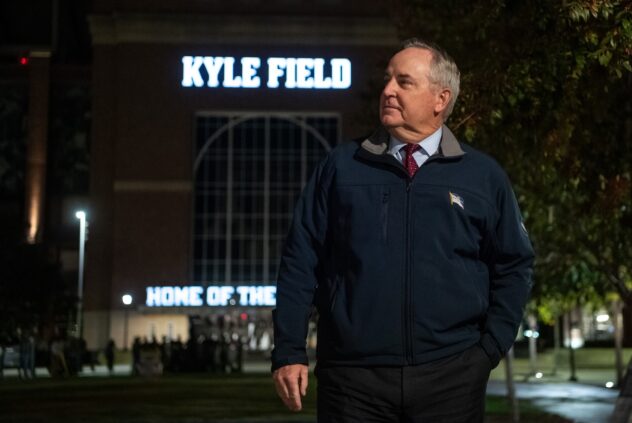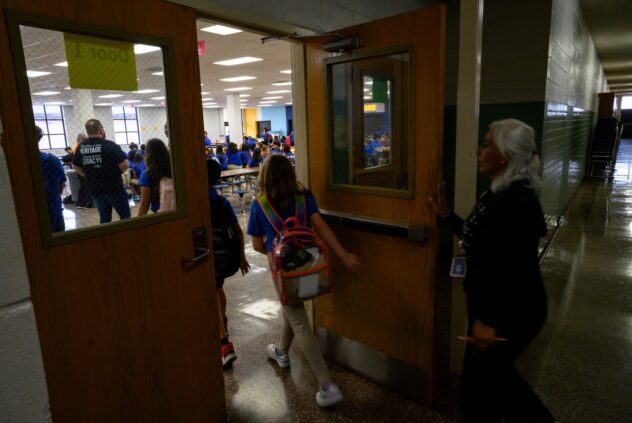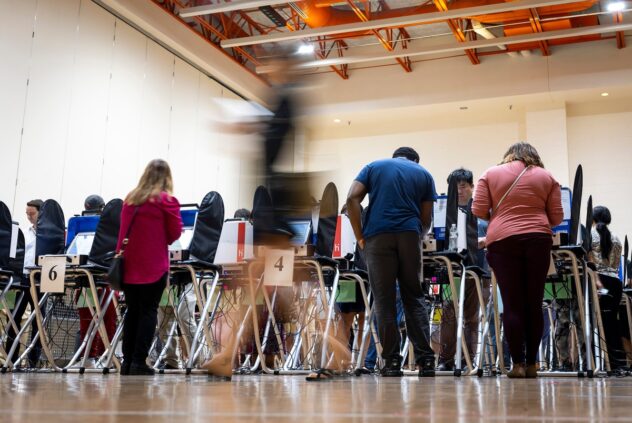Here’s how many coronavirus cases there are in Texas — and everything else you need to know

Local and state officials in Texas are taking action to prevent the further spread of the new deadly strain of coronavirus that originated in China.
Texas is not yet home to “community spread” of the disease— but U.S. health officials warned it is a matter of when, not if, an outbreak hits the U.S.
Here’s what you need to know.
How many people in Texas have coronavirus?
There have been 11 confirmed cases of COVID-19, the disease caused by the new coronavirus, in Texas, as of Monday. All of those were instances of people who got the disease overseas and then were brought to the San Antonio Lackland Air Force Base for quarantine.
Patients at the base confirmed or suspected of being infected with the new coronavirus were transferred from quarantine to the Texas Center for Infectious Disease or local hospitals to receive medical care in isolation, according to the San Antonio Express-News.
It’s not clear whether any of those patients diagnosed are Texans. Meanwhile, more than 120 people in San Antonio being quarantined at the Air Force base are set to be released on Tuesday. This comes after the group’s mandatory 14-day quarantine ended.
What’s the latest on coronavirus in Texas?
Passengers flying into select airports are being screened for the virus. Multiple universities have issued travel bans and canceled study abroad programs to and from China and also Italy, which has the highest number of cases outside Asia.
Rice University asked 17 individuals to self-quarantine after a research assistant had contact with a possible case of the virus while traveling. After returning from Italy, around 70 asymptomatic people from the University of Texas at San Antonio were also required to isolate themselves off campus for 14 days.
On Sunday, San Antonio health officials said someone with a “weakly positive” test result for the new coronavirus was briefly released from quarantine after testing negative twice. That person was the only person to test positive out of a group of 91 people who were evacuated from Wuhan, China, to San Antonio in February and quarantined for 14 days, according to the San Antonio Express-News. Centers for Disease Control and Prevention officials are notifying Texans who came into contact with the individual while that person was released.
San Antonio Mayor Ron Nirenberg said 122 people being quarantined at Lackland were on the Diamond Princess, a British cruise ship that had more than 700 people test positive for the virus. The people who tested negative at the base were expected to be released Monday, but Nirenberg issued an emergency proclamation demanding that the quarantine be extended until March 9.
Is coronavirus spreading person to person in Texas?
No. Right now, all the known Texas cases are people who were brought to San Antonio for quarantine.
The first instance of coronavirus spreading from person to person in the U.S. occurred in January, when a 60-year-old woman from Illinois contracted the virus in China and transferred the virus to her spouse, according to the CDC.
I’m hearing reports of other cases being tested in Texas. Should I be worried?
Local Austin officials said Tuesday at least one person is being tested for the virus in Travis County — but that doesn’t mean there is another confirmed case in Texas. Federal officials are expanding criteria for people to be eligible for testing, so there will likely be more reports of possible cases in the coming days and weeks. For now, those tests are being sent to an out-of-state lab — but Texas facilities will be online soon for more immediate tests.
How many cases are there in the United States?
There were more than 100 cases in the United States as of Monday evening. Nine people have died from the virus in the U.S. — all in Washington state, health officials said Monday. Globally, more than 3,000 people have died, and more than 90,000 have the disease.
How does coronavirus compare with the flu?
Coronavirus comes with seasonal flu-like symptoms, including fever, cough, shortness of breath and difficulty breathing. Severe cases of the virus can lead to pneumonia, severe acute respiratory syndrome and kidney failure. It also can be deadly for a small percentage of the population, according to the World Health Organization.
Similar to respiratory illnesses like the flu, coronavirus spreads from person-to-person contact, such as coughing, sneezing or touching infected surfaces, according to the CDC. Both diseases are especially dangerous for people who are older than 65, but the flu is more dangerous for children and pregnant women, according to The New York Times.
However, early reports indicate the coronavirus appears to be more contagious and has a higher fatality rate than the flu. Unlike the flu, there is no vaccine available to prevent or reduce cases of coronavirus.
What’s the fatality rate for coronavirus?
Estimated fatality rates for the disease range from 1% to 4%, higher than the seasonal flu’s 0.1%. But according to a paper published by the Journal of the American Medical Association, the fatality rates for the elderly or people with other underlying health conditions can be much higher — as high as 14% for people over the age of 80.
It is important to note that it is very early and data is still being gathered, so the fatality rate for COVID-19 could change, according to PBS NewsHour.
According to a study by the Chinese Center for Disease Control and Prevention, of 45,000 confirmed Chinese patients, more than 81% of cases were mild and did not result in pneumonia or resulted only in mild pneumonia. The study said “considerable transmission” of coronavirus occurs when someone is in close contact with people with the virus, such as in family households.
Roughly 2.3% of people who contract coronavirus die, and 5% are considered “critical,” which means the patients suffered organ failure, respiratory failure or septic shock, according to the Chinese Center for Disease Control study. But the fatality rate may be considerably less than 1% as more minimally symptomatic cases are detected, according to a report from The New England Journal of Medicine on 1,099 cases from China.
I saw a headline about a possible vaccine for the coronavirus. Is that good news?
While it is true researchers are testing possible solutions, they are almost certainly a long way off from a commercially available vaccine that could prevent the virus. Don’t expect anything immediate.
Dr. Anthony Fauci, director of the National Institute of Allergy and Infectious Diseases, told CNN it would take around a year for a potential vaccine to be approved. He said the vaccine would need to go through a Phase 1 clinical trial with a few dozen people for three months and then be tested in a second trial with hundreds of people for six to eight months, according to CNN.
Edgar Walters contributed to this report.
Disclosure: Rice University and the University of Texas at San Antonio have been financial supporters of The Texas Tribune, a nonprofit, nonpartisan news organization that is funded in part by donations from members, foundations and corporate sponsors. Financial supporters play no role in the Tribune’s journalism. Find a complete list of them here.
















